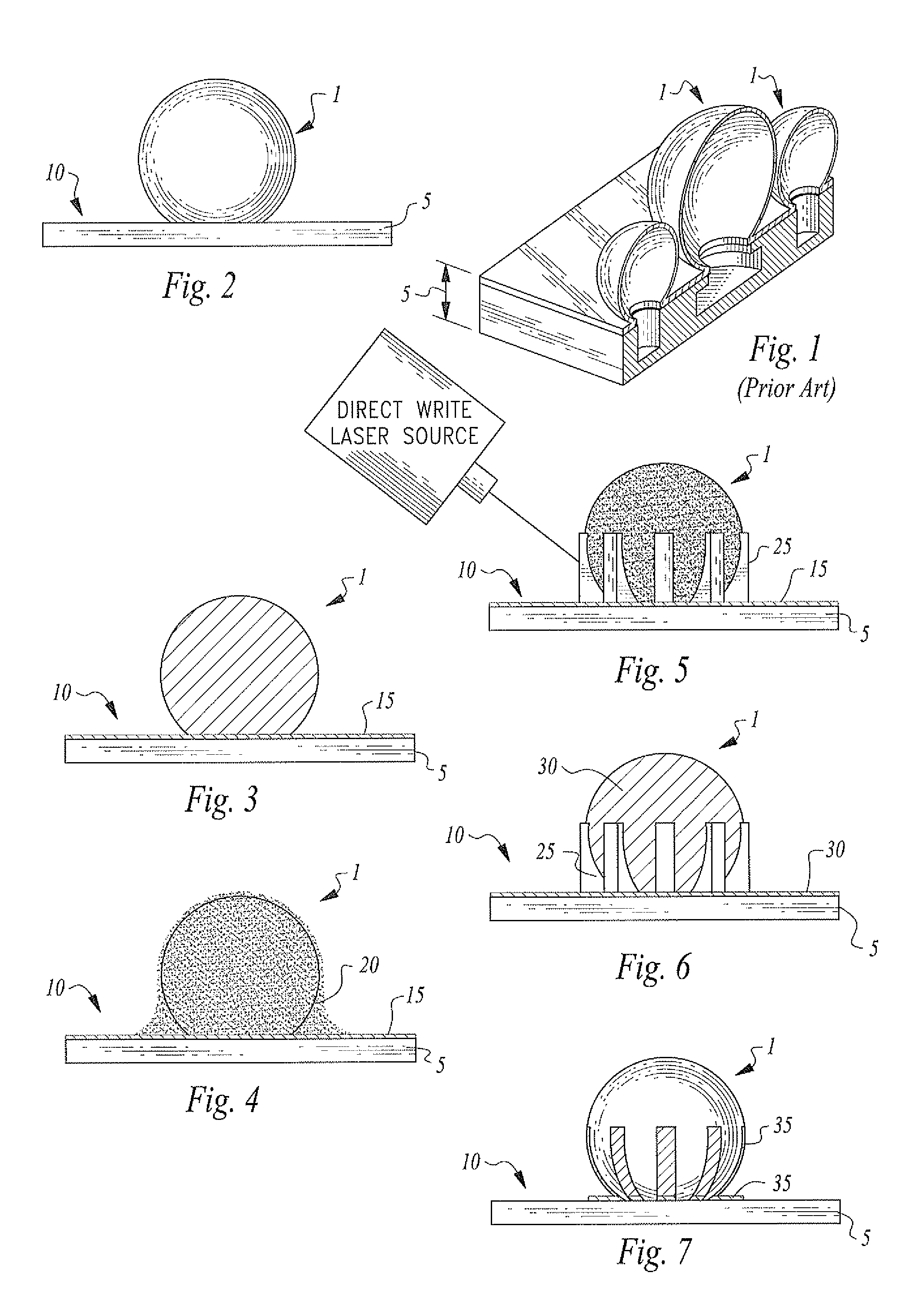Method for Defining an Electronically Conductive Metal Structure on a Three-Dimensional Element and a Device Made From the Method
a three-dimensional element and metal structure technology, applied in the field of photolithographic technologies, can solve the problems of introducing a potential for lower yield and challenging the definition of electrical conductive metal traces or electrodes on the surface of the structur
- Summary
- Abstract
- Description
- Claims
- Application Information
AI Technical Summary
Benefits of technology
Problems solved by technology
Method used
Image
Examples
Embodiment Construction
[0033]Turning now to the figures wherein like numerals define like elements among the several views, a method for defining a electrically conductive metalized structure, which may comprise an electrode or trace, on the surface of a three-dimensional element and a method for making the same is disclosed.
[0034]With respect to FIG. 1, a plurality of three-dimensional elements 1 are depicted. The illustrated three-dimensional elements 1 depict a plurality of prior art glass microspheres for use as glass shell resonator elements such as disclosed in U.S. Pat. No. 7,694,531, supra.
[0035]Three-dimensional elements 1 are disposed on substrate 5 which substrate material may comprise a silicon material or a glass material or both, such as in a Pyrex-Si wafer stack. The substrate comprises a first surface 10.
[0036]FIG. 2 illustrates a side view of an exemplar three-dimensional structure 1 in the form of a glass shell resonator structure disposed on first surface 10.
[0037]As depicted in FIG. 3,...
PUM
| Property | Measurement | Unit |
|---|---|---|
| diameter | aaaaa | aaaaa |
| thickness | aaaaa | aaaaa |
| electrically conductive | aaaaa | aaaaa |
Abstract
Description
Claims
Application Information
 Login to View More
Login to View More - R&D
- Intellectual Property
- Life Sciences
- Materials
- Tech Scout
- Unparalleled Data Quality
- Higher Quality Content
- 60% Fewer Hallucinations
Browse by: Latest US Patents, China's latest patents, Technical Efficacy Thesaurus, Application Domain, Technology Topic, Popular Technical Reports.
© 2025 PatSnap. All rights reserved.Legal|Privacy policy|Modern Slavery Act Transparency Statement|Sitemap|About US| Contact US: help@patsnap.com


